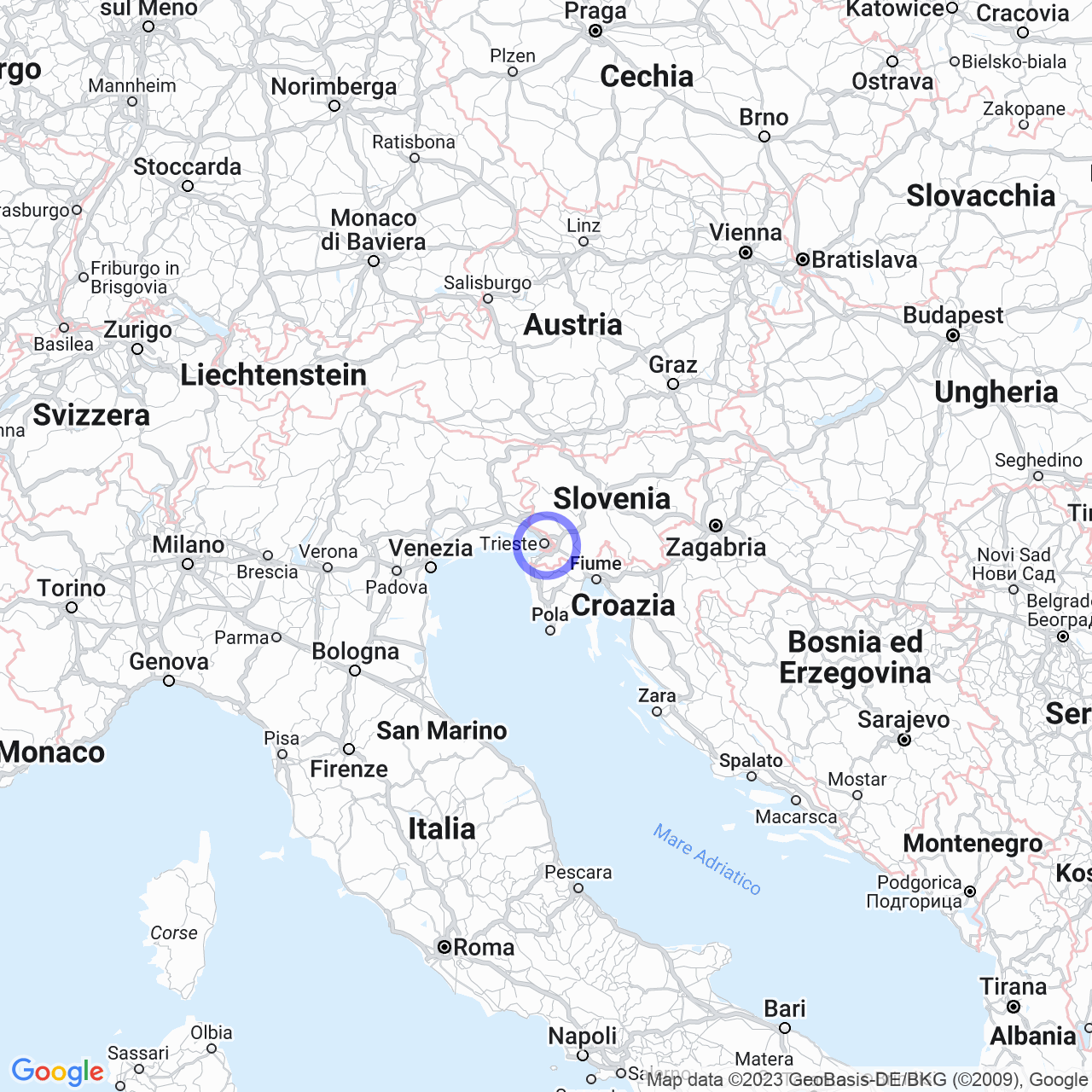Trieste
The city of Trieste: a blend of cultures
For centuries, Trieste has connected Central and Southern Europe, creating a blend of cultures and traditions. Its unique characteristic is due to its geographic location, situated between the Italian peninsula and Istria, just a few kilometers from the border with Slovenia. The city overlooks the Upper Adriatic, precisely on the Gulf of Trieste, and is the capital of the Friuli-Venezia Giulia special administrative region.
Historically and geographically, Trieste is located in the region of Venezia Giulia, an area at the northeastern tip of the Italian peninsula. Venezia Giulia includes the lands between the Gulf of Trieste, the Gulf of Fiume in Croatia, and the Karst, a rocky limestone plateau that extends between Italy, Slovenia, and Croatia.
The Territory of Trieste
The territory of Trieste is mainly hilly and mountainous, with an altitude that increases as one moves outward from the city. Geologically speaking, the Triestine territory is divided into two areas: the first is occupied by the Karst plateau, known for its caves and dolines, while the second part consists of a steep slope that slopes down towards the sea.

The Port of Trieste
The port of Trieste represents one of the main logistic hubs in Italy and the entire Southern Europe. Since 2016, it has been Italy's port with the most freight traffic and one of the most important in Europe. Its strategic position makes it a must-pass place for trade between the countries of Central Europe and those of the Mediterranean.
The History of Trieste
Trieste has a very ancient history, which dates back to Roman times. In the Middle Ages, the city came under the control of various powers, including the Habsburg Austrian Empire, the Serenissima Republic of Venice, and the Kingdom of Italy. During the 20th century, the city was annexed to Italy but was occupied by the German army during World War II.
The Triestine Culture
Trieste is a city rich in culture and traditions, blending Mediterranean, Slavic, and Central European influences. The city has always represented a bridge between diverse cultures, creating a unique and fascinating atmosphere. One of the main cultural expressions of Trieste is the Triestine dialect, a variant of Friulian that encompasses various linguistic influences.
What to see in Trieste
Among the places to visit in Trieste, the Miramare Castle, the Marine Aquarium, and the Memorial Park definitely deserve mention. The historic center of the city is also characterized by ancient squares, such as Piazza Unità d'Italia and the Roman Theater.
Trieste is a unique city in the Italian and European panorama, thanks to its geographical position and multifaceted culture. There is nothing better than exploring this fascinating destination on foot, strolling through its streets and breathing the air of a city that has gifted the world with so many unique stories and traditions.
